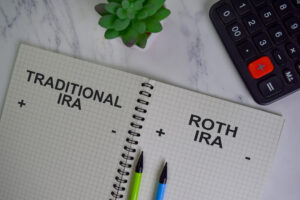Embarking on the journey of estate planning can be a daunting endeavor. With the myriad considerations and legal nuances, knowing where to start and what to cover can often become overwhelming.
However, having an estate planning checklist can significantly simplify the process, ensuring that every crucial aspect is addressed. This guide offers a structured approach to estate planning, ensuring that one’s affairs are meticulously arranged.
Understanding the Essence of Estate Planning
Before delving into the checklist, grasping the essence of estate planning is pivotal. At its core, estate planning is about preparing and organizing for the distribution of one’s assets upon their passing. This process ensures that the wealth accumulated over a lifetime transitions seamlessly to the intended beneficiaries, honoring the individual’s wishes and minimizing any potential legal or tax complications.
A Comprehensive Checklist for Estate Planning
Document Your Assets and Liabilities: Begin by making an exhaustive record of all your assets. This should include real estate, bank accounts, investments, business interests, life insurance policies and personal valuables. Equally crucial is documenting liabilities like mortgages, loans, or other debts.
Draft a Will: Creating a will is central to any estate planning endeavor. This vital document details how one wishes their assets to be distributed. It can also stipulate guardianship for minor children or make provisions for specific bequests.
Establishing A Trust: Trusts are powerful tools that can offer multiple benefits. For instance, an asset protection trust can shield assets from potential creditors or legal judgments. Trusts can also be instrumental in minimizing estate taxes and bypassing the probate process.
Durable Power of Attorney: This legal provision allows individuals to nominate someone they trust to make financial and legal decisions if incapacitated.
Medical Directives: Medical directives, often encompassing living wills or healthcare power of attorney, articulate an individual’s medical treatment preferences should they be unable to make decisions themselves.
Beneficiary Designations: Assets like life insurance policies or retirement accounts often allow direct beneficiary nominations. Reviewing and updating these designations regularly is essential, ensuring alignment with one’s current wishes.
Evaluate Tax Implications: With ever-evolving tax regulations, understanding and planning for estate taxes is pivotal. Work with tax professionals to strategize on minimizing potential estate tax liabilities.
Consider Special Assets: For those with diversified portfolios, like holdings in self-directed IRAs, special considerations might be required. These assets could have unique distribution specifications or tax nuances.
Secure Necessary Life Insurance: Life insurance can provide financial security for loved ones, cover estate tax liabilities, or even offer charitable bequests. Ensure that you have adequate coverage based on your financial and familial circumstances.
Choose an Executor: The executor will be responsible for administering the estate as per the will’s stipulations. It should be someone trustworthy, capable, and preferably familiar with the nuances of estate management.
Ongoing Maintenance and Review
Estate planning is not a static process. As life events unfold, be it births, marriages, asset acquisitions, or other significant changes, it is crucial to revisit and update the estate plan. Furthermore, periodic reviews, even in the absence of life changes, can ensure alignment with any changes in legal or tax regulations. Leveraging experts, especially for complex assets or trusts, can offer invaluable insights and ensure compliance with all pertinent regulations.
Digital Assets Management
In today’s increasingly digital world, one’s online presence and digital assets can be as valuable as physical assets. This includes digital photographs and personal blogs to cryptocurrency holdings and online business ventures. Ensure you have a clear inventory of all digital assets, complete with access details.
Moreover, provide directives in your estate plan about how these assets should be handled, accessed, or distributed upon your demise. Whether it is monetizing online content, transferring digital currencies, or simply preserving cherished memories in the virtual realm, addressing digital assets is a contemporary imperative in estate planning. This step ensures a holistic approach to asset management and safeguards the digital footprint that an individual leaves behind.
The endeavor of estate planning, while intricate, is a profound act of care and responsibility. Individuals can methodically navigate this journey with an estate planning checklist, ensuring that every detail is addressed. From drafting wills to setting up asset protection trusts or managing the nuances of self-directed IRAs, each step is a commitment to ensuring a harmonious and efficient transition of one’s legacy. By meticulously arranging one’s affairs, individuals pave the way for their wishes to be honored, their loved ones to be taken care of, and their legacy to shine through the annals of time.





